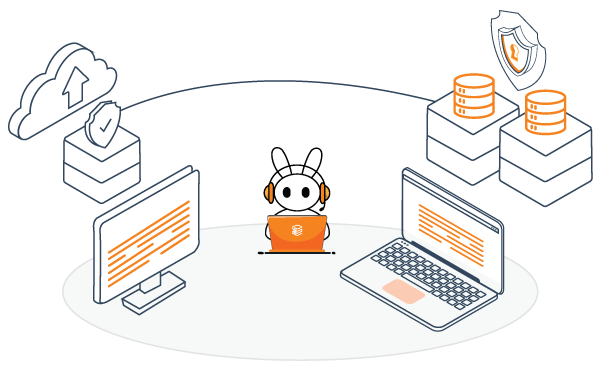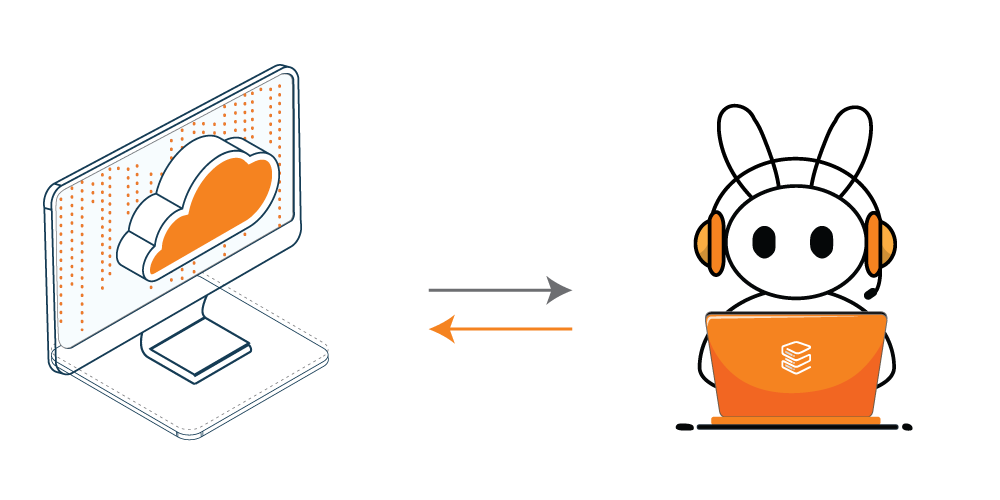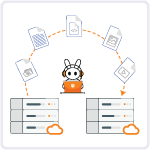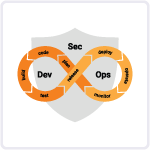Servers are the backbone of modern technology infrastructure, serving as the heart of various digital services and applications. However, like any complex system, servers are prone to encountering problems that can disrupt their functionality and lead to downtime. In this comprehensive guide, we will look at some of the most common server problems and provide detailed troubleshooting steps to help you diagnose and resolve these issues effectively.
Table of Contents
Server Troubleshooting
Troubleshooting is the systematic process of identifying, diagnosing, and resolving problems or issues that occur within a system, device, process, or environment. It involves a structured approach to understanding the root causes of server problems and finding effective solutions to restore normal functionality or optimize performance.
The goal of troubleshooting is to identify the underlying factors that contribute to a specific issue and then take appropriate steps to rectify the situation. This process can be applied to a wide range of domains, including technology, electronics, software, mechanics, and more. It’s a crucial skill for professionals in various fields, as it allows them to effectively address server problems and prevent them from recurring.
Here’s a general outline of the steps involved in troubleshooting:
- Identify the Problem: Clearly define the issue or symptom that is causing concern. This might involve gathering information from users, observing the system’s behavior, and understanding the context of the problem.
- Gather Information: Collect relevant data, logs, error messages, and any other pertinent information related to the problem. This information will help in understanding the scope of the issue and its potential causes.
- Isolate the Cause: Narrow down the possible root causes of the problem. This might involve analyzing patterns, examining system components, or reviewing recent changes that might have contributed to the issue.
- Formulate Hypotheses: Based on the gathered information, develop hypotheses about the likely causes of the problem. These hypotheses will guide your investigation.
- Test Hypotheses: Systematically test each hypothesis to validate or invalidate its accuracy. This might involve trying different solutions, configurations, or adjustments to see how they affect the problem.
- Analyze Results: Examine the outcomes of the tests to determine whether they confirm or disprove your hypothesis. This step helps refine your understanding of the problem’s root cause.
- Implement Solutions: Based on the analysis of results, implement the appropriate solutions to address the identified issues. This might involve making configuration changes, fixing code, repairing hardware, or making adjustments to the system.
- Verify Solution: After implementing a solution, thoroughly test the system to ensure that the problem has been resolved. Monitor the system’s behavior and gather feedback to confirm that the issue no longer persists.
- Preventive Measures: Once the problem is resolved, consider implementing preventive measures to minimize the likelihood of the issue occurring again in the future. This might involve making system improvements, updating documentation, or enhancing monitoring practices.
Common server problems and Solutions
1. Slow Performance
Slow server performance is a prevalent issue that can stem from various sources, including hardware limitations, resource utilization, or software inefficiencies.
Troubleshooting Steps:
- Resource Monitoring: Use monitoring tools to track CPU, memory, disk, and network utilization. Identify resource-intensive processes that might be causing slowdowns.
- Optimize Code: Poorly optimized code can strain server resources. Profile and optimize the codebase to improve execution efficiency.
- Scaling: Consider scaling horizontally (adding more servers) or vertically (upgrading existing resources) to distribute the workload better.
- Caching: Implement caching mechanisms, such as content delivery networks (CDNs) or object caching, to reduce server load and improve response times.
2. Downtime and Unavailability
Server downtime can result from hardware failures, software glitches, or network issues. Unplanned downtime can significantly impact user experience and business operations.
Troubleshooting Steps:
- Monitoring and Alerts: Set up monitoring tools that send alerts when the server goes down. Use services like Pingdom or Nagios to stay informed.
- Redundancy: Implement redundancy through load balancers and failover mechanisms to ensure service availability even if one server fails.
- Backup and Recovery: Regularly backup data and configurations. Test the backup restoration process to ensure data can be recovered promptly.
- Identify Root Cause: Investigate logs and error messages to identify the underlying cause of downtime and address the issue at its source.
3. Security Breaches
Security breaches can compromise sensitive data, damage reputation, and disrupt operations. Server vulnerabilities, outdated software, and weak access controls are common culprits.
Troubleshooting Steps:
- Regular Updates: Keep server software, operating systems, and applications up to date with the latest security patches.
- Firewalls and Security Groups: Implement firewalls and security groups to restrict unauthorized access and protect the server from malicious traffic.
- Strong Authentication: Enforce strong password policies, implement multi-factor authentication (MFA), and limit access to authorized personnel.
- Vulnerability Scans: Conduct regular vulnerability scans to identify and address potential weaknesses in the server’s configuration4.
4. Disk Space Exhaustion
Running out of disk space can lead to application crashes, errors, and overall server instability. Accumulated log files, temporary data, and application artifacts can contribute to this issue.
Troubleshooting Steps:
- Disk Monitoring: Set up alerts to notify you when disk space usage reaches a critical threshold.
- Cleanup Scripts: Implement automated scripts to clean up temporary files, logs, and other unnecessary data regularly.
- Disk Expansion: If feasible, expand the disk space or migrate data to larger storage to prevent future space shortages.
- Log Rotation: Configure log rotation to compress and archive log files, preventing them from consuming excessive disk space.
5. Network Connectivity Issues
Network problems can disrupt communication between servers and clients, causing slow loading times and unresponsiveness.
Troubleshooting Steps:
- Ping and Traceroute: Use network diagnostic tools like ping and traceroute to identify latency and packet loss issues.
- Check Firewall Rules: Review firewall rules to ensure that necessary ports are open for the required services.
- DNS Resolution: Verify DNS settings to ensure correct domain name resolution, preventing connectivity problems.
- ISP or Hosting Provider: If issues persist, contact your Internet Service Provider (ISP) or hosting provider to address potential network problems.
6. Application Errors
Application errors can arise from coding bugs, database inconsistencies, or misconfigurations, leading to crashes or unexpected behavior.
Troubleshooting Steps:
- Error Logs: Examine error logs for detailed information about the issue. Logs can reveal information about the underlying reason.
- Code Review: Analyze the application’s codebase for bugs, security vulnerabilities, and compatibility issues.
- Database Optimization: Optimize database queries, indexes, and overall schema to improve application performance and reliability.
- Testing Environments: Use separate testing environments to identify and resolve issues before deploying changes to the production server.
Experience hassle-free server maintenance with SupportFly
We understand how important it is to be focused on your core business to make it a success. With the world turning digital, focusing on these server-related issues can be an overwhelming task. Hiring a dedicated support team will require a huge capital investment and recurring expenses will be there.
To help you out, SupportFly offers server management services to make sure that all your servers run at peak efficiency and performance. Our certified server experts make sure that these common server issues don’t even pop-up. For bigger issues, our 24×7 dedicated server support team is readily available to resolve them. If you’re looking for the best server management company, you must visit SupportFly.
Conclusion
Servers are the backbone of digital services, and encountering server problems is an inevitable part of the operation. However, armed with the knowledge and troubleshooting steps provided in this guide, you are better equipped to diagnose, address, and prevent common server problems. Regular maintenance, monitoring, and proactive measures can significantly contribute to maintaining a stable and reliable server environment. Remember that each issue might have unique aspects, so adapt these troubleshooting steps to your specific situation, and consider seeking professional assistance for complex server problems from SupportFly. By staying vigilant and proactive, you can ensure that your servers remain efficient, secure, and available for your users.
FAQs
What are the server issues?
Server issues refer to problems, glitches, or challenges that affect the performance, availability, security, or functionality of a server. These issues can arise from various sources, including hardware, software, network, and configuration factors. Common server issues include slow performance, downtime, security breaches, disk space exhaustion, network connectivity problems, and application errors.
How do I troubleshoot my server performance?
Troubleshooting server performance involves identifying the underlying causes of slow or inefficient server operation and taking steps to address them. Here’s a general process for troubleshooting server performance:
Resource Monitoring: Use monitoring tools to track CPU, memory, disk, and network utilization. Determine which processes are utilizing an excessive amount of resources.
Optimize Code: Review the code of applications running on the server. Identify and fix inefficient or resource-intensive code.
Scaling: Consider scaling the server resources horizontally (adding more servers) or vertically (upgrading hardware) to distribute the workload better.
Caching: Implement caching mechanisms to reduce server load. Use content delivery networks (CDNs) and object caching to improve response times.
Database Optimization: Improve database performance by optimizing queries and indexes.
Network Analysis: Examine network performance using tools like ping, traceroute, and network analyzers to identify bottlenecks or latency issues.
How do I fix server slowness?
Fixing server slowness involves addressing the root causes that contribute to the slow performance. Here are steps to help fix server slowness:
Identify the Cause: Use monitoring tools to identify which resources (CPU, memory, disk, network) are under stress and which processes are consuming excessive resources.
Optimize Code: Analyze and optimize the codebase to reduce inefficient code and optimize algorithm performance.
Resource Allocation: Ensure that resources are allocated properly to meet the demands of the applications running on the server.
Upgrade Hardware: If server resources are consistently maxed out, consider upgrading the hardware to handle higher workloads.
Implement Caching: Introduce caching mechanisms to reduce the load on the server and improve response times.
Review Dependencies: Examine third-party services or dependencies that might be causing delays or bottlenecks.
What causes common server problems?
Common Server problems can have various underlying causes, including:
Hardware Failures: Components like hard drives, memory modules, or CPUs can fail, leading to server issues.
Software Bugs: Software applications, including the operating system, can have bugs or vulnerabilities that affect server stability.
Resource Exhaustion: Running out of CPU, memory, or disk space can lead to performance degradation.
Network Issues: Connectivity problems, high latency, or bottlenecks in the network can disrupt server communication.
Security Breaches: Server vulnerabilities can be exploited by attackers, leading to security breaches.
Misconfigurations: Incorrect server configurations can lead to compatibility issues, downtime, or performance-related server problems.
Overloaded Servers: If a server is handling more traffic than it can handle, it might experience slow performance or crashes.
Environmental Factors: Temperature, humidity, and physical location can impact server hardware performance.
How can I stay away from these common server problems?
To stay away from these common server problems, you should consider outsourced server management services from SupportFly. Our experts ensure that these common server problems don’t even occur to your server. And even if they occur, our certified server admins resolve them before anyone notices them.
What impact can these common server problems have on my data?
These common server problems, if not resolved on time, these common server problems can lead to bigger issues that might cause data loss. It’s important to resolve these server issues actively. SupportFly’s server experts will help make sure these server problems are solved instantly.
How can 24×7 server monitoring help in avoiding these server problems?
SupportFly’s certified server admins will monitor your server at all times. Even the smallest of the issues will be detected instantly and resolved at the same time helping you avoid all types of server problems. Server monitoring makes your server free from these common server problems.






































































